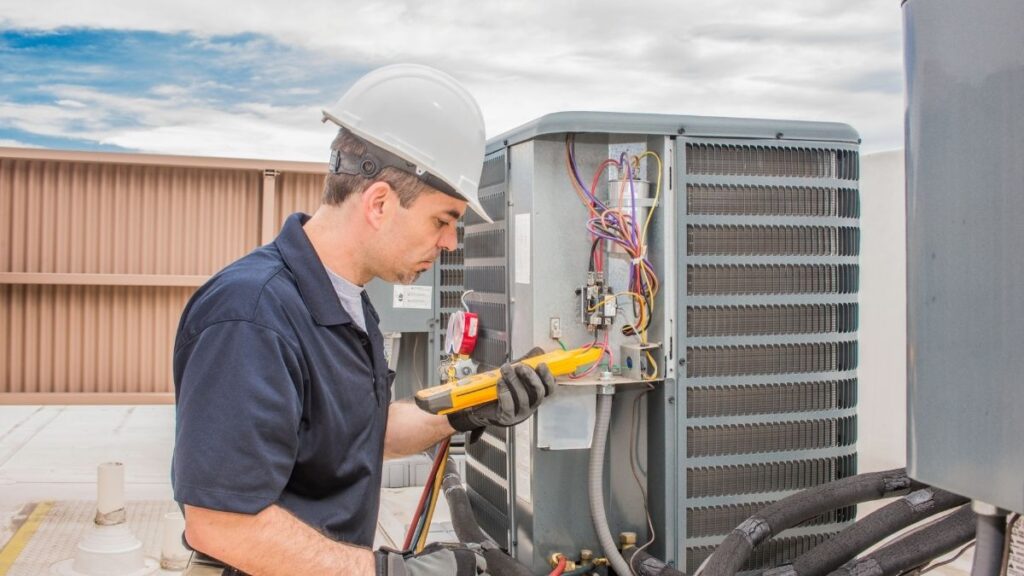
Strategies for HVAC leak testing
Introduction
Leak Testing: To be efficient and reliable, every heating, ventilation, and air conditioning (HVAC) system should be leak-free. Leaks in HVAC systems can be introduced during production and assembly, and ageing HVAC systems can acquire leaks over time. Because many refrigerant leaks are minor, they can be difficult to detect unless you are familiar with the various HVAC leak detection procedures. A variety of factors can cause leaks in the HVAC system. They can be caused by vibrations, such as those seen in automobile air conditioning.
They can also be caused by worn seals, hoses, or valve fittings, as well as normal wear. HVAC leaks can also be caused by constant pressure. Different tests may be required to identify the amount of a leak due to these varied reasons. Micro-leakage, defined as leaks of less than 0.5 grammes per year, can potentially influence HVAC performance, necessitating the use of more precise leak testing procedures.

Strategies for HVAC leak testing
Different leak testing options are available depending on the type of leak you’re attempting to find.
- A bubble test is the most straightforward and fastest way to detect significant leaks. A bubble or dunk test involves filling the test item with air or gas, immersing it in water, and then watching for bubbles. This is the most basic method of leak detection, and it will show larger leaks—usually more than 4.2 ounces (120 grammes) of coolant per year.
- Oil spotting is another simple method for detecting a leak in an HVAC system. Because refrigeration coolant contains oil to lubricate the compressor, you may leak if you notice oil stains in joints, tubes, or near HVAC equipment.
- Leaks in the evaporator coil of HVAC systems are common and difficult to detect. A sniffer is required for more advanced and measurable leak detection. It is a device that detects the presence of tracer gases, such as coolant leaks. It’s also necessary for tracer gas testing, the most accurate approach to finding an HVAC leak.
Tracer gas testing for HVAC
The search for leaks in the HVAC system begins at the factory. During the manufacturing process, parts must be checked for potential leaks, including difficult-to-detect micro-leaks. Tracer gas testing is the most effective method for detecting micro-leaks. A pressure decay test is usually performed first if a larger leak is detected, followed by a tracer gas test. Looking for major leaks ahead of time guarantees that big amounts of tracer gas aren’t released during the leak test, which could skew the results.
Many CTS clients use TracerMate II to manage the full testing process, from the gross leak test through the tracer gas sequence, all while looking for micro-leaks. You will evacuate and fill the part with a pressured gas—usually helium—during a tracer gas leak test with the TracerMate II. Then, you will use a mass spectrometer gas analyzer to detect any gas leaking from the part. The leak rate is calculated by measuring the tracer gas in a controlled environment over time and relayed to the TracerMate by the leak detector.
It may detect smaller leaks than pressure decay testing; therefore, a tracer gas sniffer test is the most cost-effective technique for detecting leaks in HVAC parts. Helium or forming gas accumulation testing and helium hard vacuum testing are two types of tracer gas tests that can be used to test final assemblies. A nitrogen purge test is the best way to check for leaks in fittings and brazed connection points.
Nitrogen purging leak testing
The TracerMate II may also be used to control nitrogen purge testing, which is perfect for testing subassemblies and attachment points in HVAC systems. This innovative tracer gas leak test was created by CTS and uses a clamshell that fits around the pipe or joint to establish a nitrogen barrier around the fittings. First, the sealed clamshell is flooded with nitrogen to remove any remaining atmosphere and produce a neutral test environment to check for leaks. After that, the portion under test is evacuated and repressurized with a tracer gas like helium.
A mass spectrometer in the atmospheric chamber enclosing the seal detects any helium leaking from the part into the nitrogen test environment. The nitrogen purge test is perfect for HVAC system testing because it is very accurate and avoids false leak failures. It can also detect leakage of as little as 0.5 grammes of refrigerant per year. The clamshell design is available in both stationary and handheld versions, allowing it to test various HVAC systems.
Conclusion
There are many different types of HVAC leak tests and many different parts to evaluating HVAC systems for leaks. When evaluating HVAC assemblies and components, it’s critical to know how to measure the many sorts of leaks and micro-leaks that can occur.



